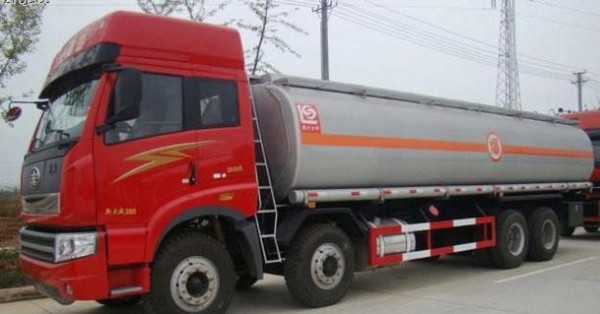In recent years, the occurrence of traffic accidents on large-scale tanker trucks has been on the rise, most of which are caused by improper operation and inappropriate methods of use. How can we prevent some traffic accidents from happening? In the use of the process and need to pay attention to what details? First of all, each large tanker truck must have a special fire extinguisher, and there are also rods that touch the subway chain and avoid electricity. In the process of driving a large tanker, touch the subway chain should touch the inside. When the tanker is refueling or when it is draining, it is necessary to insert the plug into the more humid ground. When the oil valve is released, the drain pipe must not leak, the outlet of the oil tank is unimpeded, and there is a habit of frequently cleaning the filter of the oil pump, and no dirt can enter the delivery hose. Neither the carburetor of an internal combustion engine nor the exhaust pipe of a large-scale tanker can be tempered. It is recommended to install the exhaust pipe directly in front of the car. Friends of the tank truck must be careful not to wear shoes with iron nails, nor can they smoke near the tanker. When stopping the enlarged tanker, pay attention not to park near the fire source. Just as the summer temperatures are high, the tanker is finally placed in a relatively cool place. It is advisable to have a place where special care and safety measures are available. All the lighting equipment in the car must be very good, the lamps and lanterns are below 36 watts to avoid sparks and accidents. When the sediment in the tanker is frozen, avoid using fire and you can push it to the thawing way of heating house, hot water, steam and so on. In the routine maintenance of the bottom of the vehicle, the gas turbine must be stopped, and the wheel must be fastened with a hand-held robot. Every time a large tanker truck is inspected and repaired, it needs to be tested. It must be driven by skilled personnel. There must be no people and objects in the vehicle. If it is necessary to test the road on the road, it must be accompanied by trials issued by various traffic departments. Trial photo taking.
Pneumatic cylinders (sometimes known as air cylinders) are mechanical devices which use the power of compressed gas to produce a force in a reciprocating linear motion.
Like hydraulic cylinders, something forces a piston to move in the desired direction. The piston is a disc or cylinder, and the piston rod transfers the force it develops to the object to be moved. Engineers sometimes prefer to use pneumatics because they are quieter, cleaner, and do not require large amounts of space for fluid storage.
Because the operating fluid is a gas, leakage from a Pneumatic Cylinder will not drip out and contaminate the surroundings, making pneumatics more desirable where cleanliness is a requirement. For example, in the mechanical puppets of the Disney Tiki Room, pneumatics are used to prevent fluid from dripping onto people below the puppets.
Once actuated, compressed air enters into the tube at one end of the piston and, hence, imparts force on the piston. Consequently, the piston becomes displaced (moved) by the compressed air expanding in an attempt to reach atmospheric pressure.
Although pneumatic cylinders will vary in appearance, size and function, they generally fall into one of the specific categories shown below. However there are also numerous other types of pneumatic cylinder available, many of which are designed to fulfill specific and specialized functions.
Pneumatic Cylinder Single Acting Cylinders, Telescoping Cylinder, Double Acting Cylinders, Telescoping Pneumatic Cylinder NINGBO BRANDO HARDWARE CO.,LTD , https://www.brandopneumatic.com